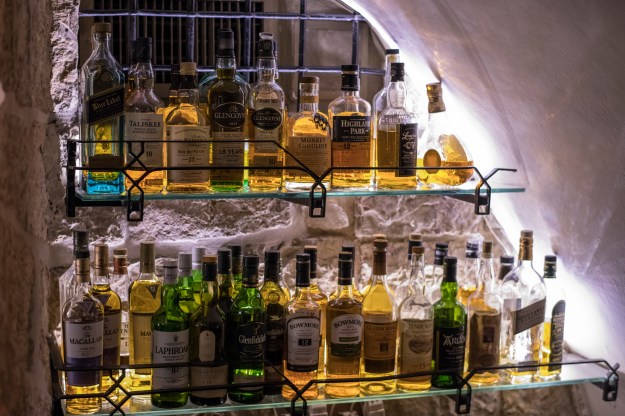Jerusalem is a microcosm of Israel and Palestine—and, as locals would tell you, there is never a “day of peace in the City of Peace.” No two days are ever the same.
It is a contradiction of ancient beauty and modern madness. Though the city is touted by Israeli authorities as the harmonious center of three monotheistic world religions, with its history tainted by wars, poverty, and an ongoing military occupation, tension is palpable.
Israel’s West Jerusalem—with its clean, paved roads, tree-lined streets, picturesque cafés, and boutiques—is in stark contrast to the underserved, neglected Palestinian neighborhoods of East Jerusalem. And there, illegal Israeli settlements pepper the landscape. Their signature ceramic red tile roofs are reminiscent of Miami suburbs, only set behind fortified walls manned by armed guards.
Continuously inhabited for over 4,000 years, destroyed and rebuilt several times, Jerusalem’s Old City is divided loosely into four quarters (Armenian, Christian, Muslim, and Jewish) and is surrounded by a gigantic stone wall with access through seven gates. So if you’re there for only a day, the Old City is the quintessential Jerusalem experience.
The Old City is also a main location in the struggle for East Jerusalem. Some quarter of a million Israeli settlers live across the Green Line, the 1948 armistice line that separates the West Bank from Israel proper, and many of them reside in the Old City. Daily life for many Palestinian Jerusalemites includes eviction from their homes, which are taken over by settlers. You’ll notice Israeli flags hanging from some of their windows or rooftops, especially on bustling al-Wad thoroughfare.
It should be noted that in these parts, time can be a relative construct, a rough approximation. Schedules are fluid, so the specific hours here are merely suggestions.
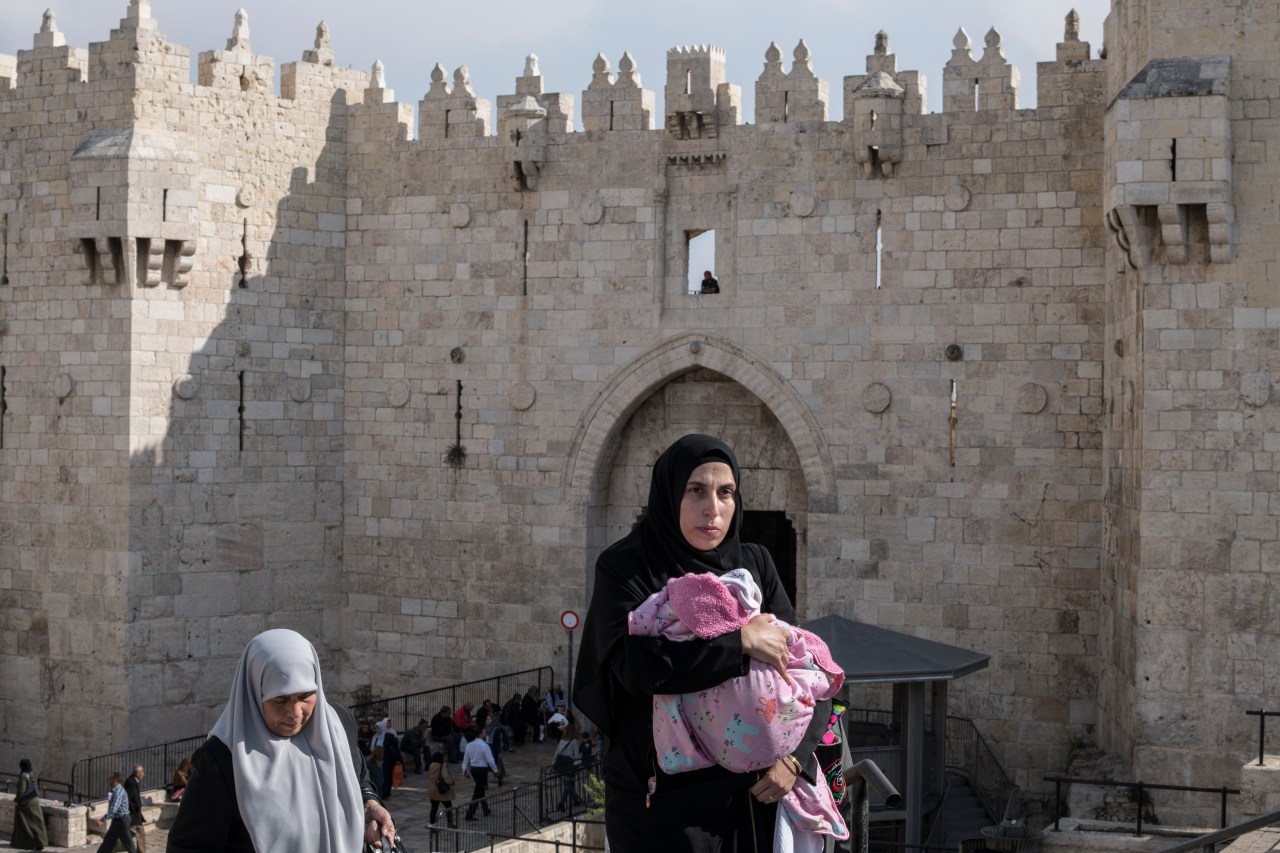
Start off at Damascus Gate, or Bab al-Amoud, where you’ll find the mishmash of street life that characterizes Jerusalem—Palestinian grandmothers selling thyme, sage, and grape leaves outside the imposing 20-foot gate riddled with bullet holes from wars past, young men chatting on the amphitheater-like steps, Orthodox Jewish kids running among backpackers, and Christian pilgrims from every corner of the world.
Be prepared for the ubiquitous presence of soldiers and Israeli Border Police (a kind of gendarmerie or militarized police force). Unbeknownst to many tourists, Damascus Gate has been a flashpoint: You’ll see soldiers routinely stop and search Palestinians there, asking them for their identity cards before leading some away. Attacks on armed Israeli security officers have increased in the last few years, and in mid-February, Israeli authorities completed construction of a military watchtower checkpoint right outside the gate, with plans to install others.
This dark reality cannot obscure Jerusalem’s charm, especially in the Old City, with its narrow streets and alleyways, secluded courtyards, vibrant souks, and resilient residents. Stuck between East and West, the Old City is an uneasy melting pot of people forced to cohabitate.
Once you walk through the gate, make a quick zigzag through some stalls, and your view will open up on a seemingly endless row of lively shoppers and shopkeepers. Grab a cup of freshly squeezed pomegranate juice from one of the vendors, identifiable by the blood-red fruit piled high on their stalls. This, of course, is seasonal, and the same can also apply to orange and carrot juice. If you’re lucky, you’ll run into a traditionally clad carob juice vendor carrying a large brass container on his back. This is the ultimate street drink.
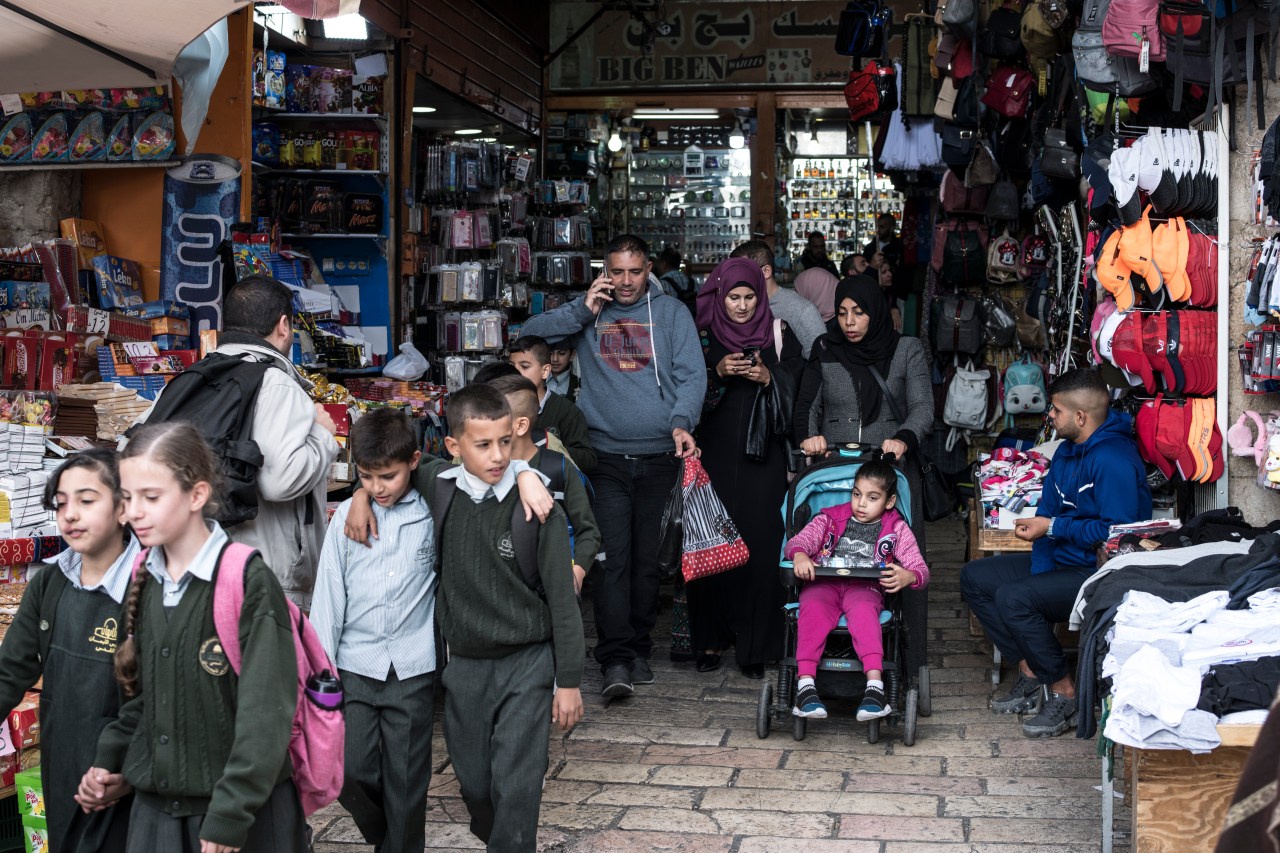

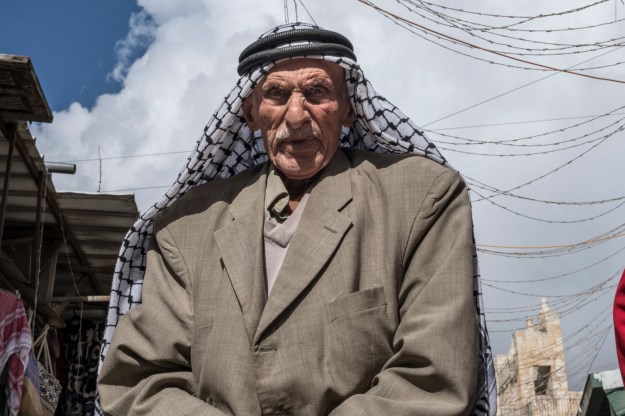
Next, grab a loaf of ka’ak al quds, the famous oval-shaped, sesame-covered bread—crunchy on the outside but soft and buoyant on the inside—from any of the bakeries or pushcart peddlers in your path. As you sip your fresh nectar and tear into that ring of goodness, remind yourself that this is just a snack and there’s a lot more to save room for. Keep right at the fork and veer into Khan al-Zeit.
This is the liveliest of all the Old City’s markets, jammed with buyers and merchants, tourists and pilgrims. Arabic, Hebrew, English, and other languages from various countries can be heard. Cruise the endless stalls selling T-shirts, knickknacks, toys, and handmade pottery. (More on that later.) Shopkeepers can be quite forward and beg for your attention with the often repeated “Can I ask you one question?” Of course, everything they sell is negotiable, so never accept the first price.
You’ll want to sample from the stacks of spices and nuts or indulge in the many Arabic sweets you’ll encounter. But hold back. You’re going to have breakfast soon.
Through a maze of alleys and streets, the market eventually gives way to others, like Souk al-Attarin (formerly a spice and perfume market, selling mainly clothing now) and Souk al-Lahamin (the butcher’s market), which is not for the faint of heart and is akin to walking through a slaughterhouse, with sheep bits hanging from meat hooks.
Near a string of stores selling gold and other jewelry, you’ll finally hit Via Dolorosa. This is the path believed to have been walked by Jesus before his crucifixion. Today it is routinely filled with Christian pilgrims—often lugging large wooden crosses up the cobblestone steps—making stops at the 14 Stations of the Cross.
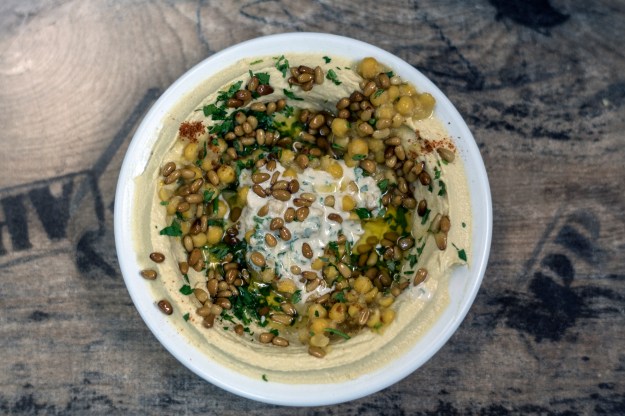
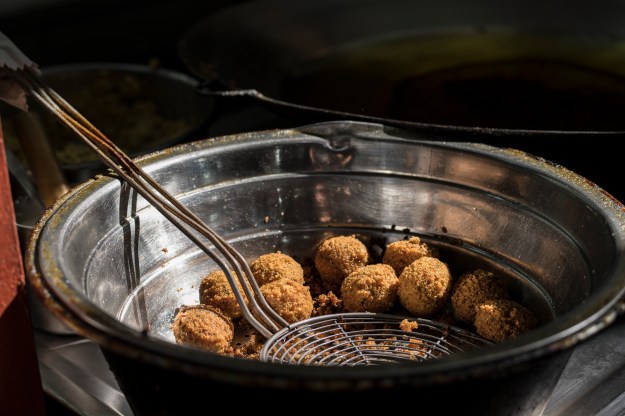
Turn right onto Via Dolorosa, and close to the eighth station, which is marked with the Roman numeral VIII, you will find Hummus Lina in the Christian Quarter. It’s a small, bare-bones place famous for its creamy chickpea paste served in a myriad of ways—with savory ful (stewed fava beans) or fried pine nuts or as msabaha (a hummus variation that’s served warm). Order a breakfast spread of any or all with a plate of crunchy falafel. Bread, chopped pickles, onions, and hot peppers will appear, on the house.
Once you are nice and full, head back down Via Dolorosa and take the first right toward the Church of the Holy Sepulcher. On the way, you will cross narrow, inclined paths lined with shops selling everything from fine jewelry and pearl-inlaid Damascene furniture to yarmulkes emblazoned with the Los Angeles Lakers logo.
The church, believed to be where Jesus was crucified, is one of the most striking sites in Jerusalem’s Old City. It anchors the Christian Quarter and is almost always full of pilgrims and tourists placing their hands on the Stone of Anointing, where Jesus’ body is said to have been anointed before burial. The recently renovated burial bed of Christ is inside the tomb shrine, which is known as the Edicule. You may have to wait in line to get to it. Whatever your religious beliefs, the church itself is a marvel, with its vaulted ceilings, mosaics, domes, arches, paintings, altars, and chapels.
Next, make your way to the Armenian Quarter, the quietest and most overlooked neighborhood in the Old City. It is home to a residential monastery and a few shops and restaurants, but perhaps more important to some, it’s where Jerusalem’s famous Armenian ceramics are created. The focal point here is the monastery compound, which takes up about 70 percent of the quarter and is laden with courtyards and gardens. St. James Cathedral, known for its ornate decorations and tiled walls, has hundreds of oil lamps that hang from its ceiling. There is no electricity inside. The church is open to visitors for only a short period during services (conducted in Armenian) on weekdays at 3 p.m. You can marvel at the church’s exterior, decorated with tiles and khatchkars, or stone crosses, during a stroll through the mural-lined, metalwork-laden courtyard.
This structure has been the site of brawls between priests of various sects, assaulting each other with broomsticks and fists. The church is shared by six Christian denominations—Greek Orthodox, Roman Catholic, Armenian Apostolic, Coptic, Ethiopian, and Syriac Orthodox—each controlling certain parts of the building and holding services at different times of the day. Structural repairs usually spark the dust-ups, which is why it might be a relief that two Muslim families are the custodians and keyholders of the church, opening and closing it every morning and night.
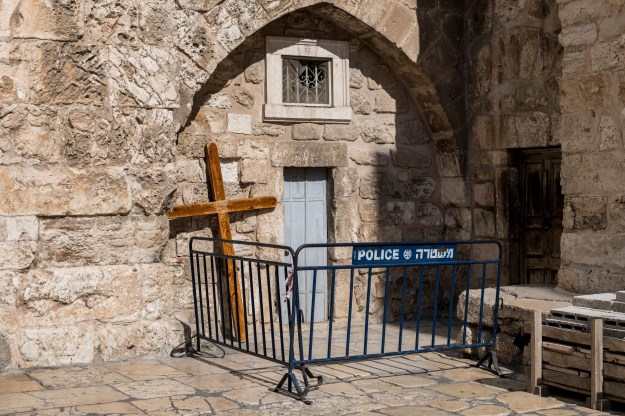
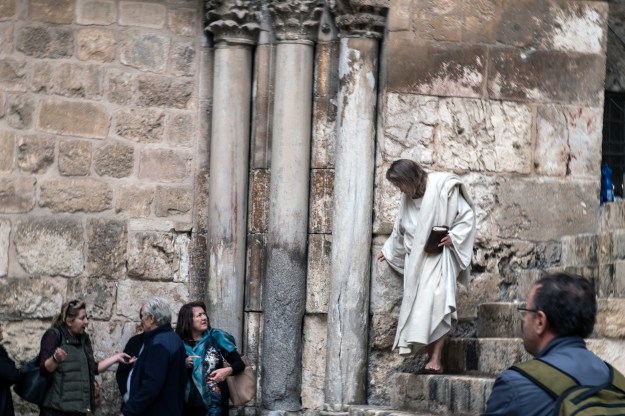
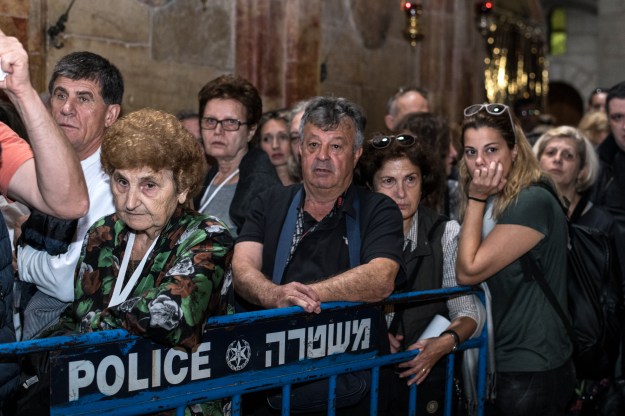

Ask any local adult or child for directions to Zalatimo, a hole-in-the-wall pastry shop that’s a very short distance from the church. It’s a rite of passage for those seeking authentic Arabic sweets. Believed to have opened in 1860, Zalatimo serves only one dish, made according to a recipe passed down through generations: mutabak, a thin phyllo dough pastry filled with goat cheese or nuts. The dough is rolled out paper thin, then folded with either ingredient inside and placed inside a piping hot oven. Baked until golden, it’s served with a drizzle of syrup and dusting of powdered sugar. You’ll dream about this dish for years after you first taste it.
12:00pm
Hagop Antreassian’s Armenian Pottery
13 Zion Gate Street
Armenian Quarter
Old City
Ceramics are relatively common in Jerusalem. While beautiful, many are manufactured in the West Bank city of Hebron, and not all are handmade. A few Armenian families in Jerusalem—the Karakashians, Balians, and Sandrounis—are ceramics masters, but most of their shops are outside the Armenian Quarter. One of the artisan shops in the quarter where ceramics are crafted by hand is Hagop Antressian’s. His studio near Zion Gate is filled with tile pieces splashed with flower, vine, and pomegranate motifs and patterns inspired by old Armenian manuscripts and decorative arts.
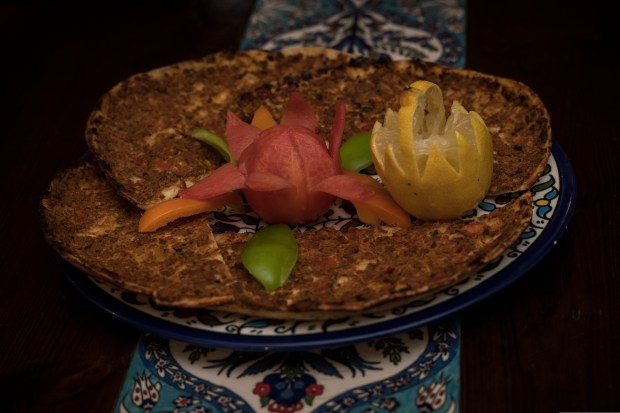
For a quick lunch, head over to Bulghourji, a restaurant close to Jaffa Gate. In Arabic, bulghourji refers to the man who makes burghul (bulgur, or cracked wheat), and it’s believed that the structure this restaurant is in was once a burghul factory. There you’ll want to order this one item: the Armenian sfeeha, a paper-thin mini pizza, smeared with minced lamb, tomatoes, and onions, with nary a hint of grease. Sometimes served with lemon, sfeeha is a staple of Armenian cuisine and is served across the Middle East wherever the Armenian diaspora can be found.
Now go to the Jewish Quarter, where you can find the Western Wall, Judaism’s holiest site. To get to it, you must go through a checkpoint and metal detector. The plaza that overlooks and runs up against the wall was the Old City’s Moroccan Quarter until it was bulldozed after the 1967 war to extend the esplanade.
You will see men praying in what functions as an outdoor synagogue. Women pray separately, which has been a point of contention between ultra-Orthodox worshippers and members of a group called Women of the Wall since 1988. The group wants to be able to wear prayer shawls, read aloud from the Torah, and pray at the site, and in 2018, Israel’s Supreme Court granted them that right, but that hasn’t prevented Orthodox men and women from disrupting their service.
The Jewish Quarter is home to several old synagogues, and plaques peppered through the neighborhood layout their history for visitors. Licensed and unlicensed tour guides will offer their services, but with alleyways and limestone homes, it’s a good place to stroll on your own and people-watch. Be sure to make it to the Cardo Maximus, a thoroughfare lined by old colonnades and modern shops selling everything from Judaica to jewelry.


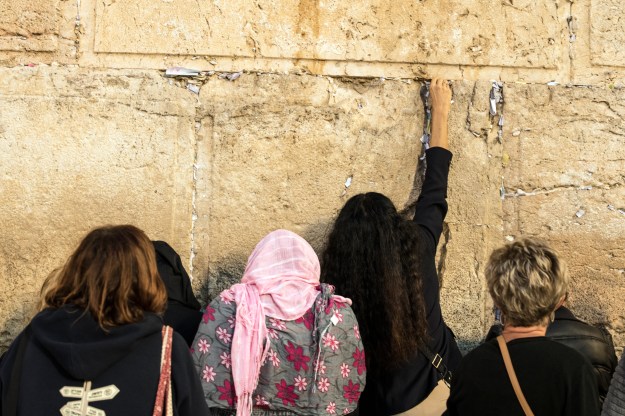
(Go at this time if you are Muslim; otherwise, change itinerary in accordance with the hours below.)
No day is complete without a visit to two icons at the heart of Jerusalem: the Dome of the Rock and al-Aqsa Mosque. Like everything else in Israel and the West Bank, access to the compound housing the two sites is complicated and depends on who you are. There are several entry points, which Muslims can go through at almost any time with a passport. Everyone else has to go to the Moroccan Gate back near the Western Wall between 8:30 a.m. and 10:30 a.m., Sunday through Thursday. Dressing modestly is a must for everyone.
The two sites are revered Islamic landmarks. Though they are spiritual sanctuaries, they are also places people gather to chat and catch a break from life’s daily woes. On warmer days, you can find many taking refuge by the outside nooks of the octagonal structure of the Dome of the Rock, while others gather in circles under the shade of trees nearby to read the Quran or study. Entry inside is for Muslims only, but tourists may stroll around the esplanade. Marvel at the stained-glass windows of both structures, many of which have been restored by hand, inscribed and decorated with arabesque motifs, verses from the Quran and geometric shapes.
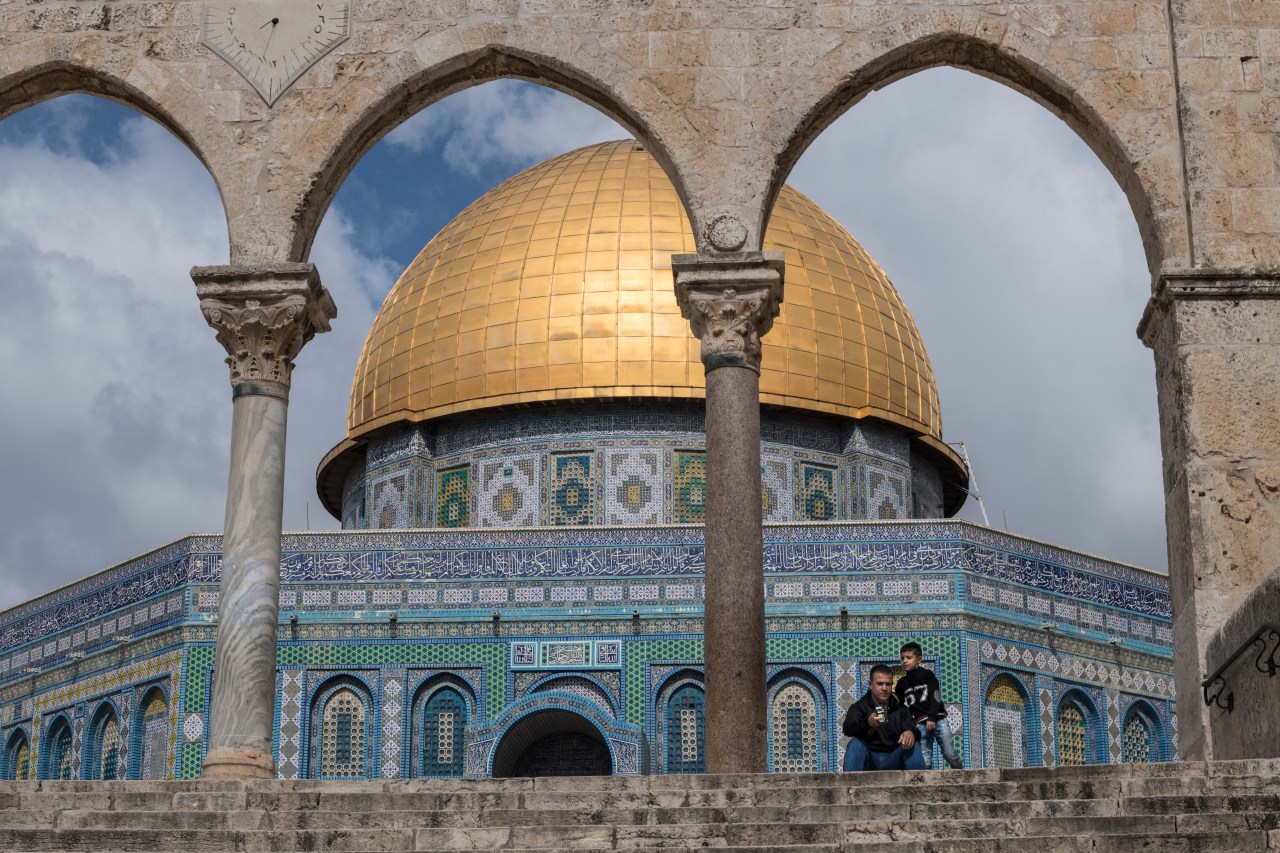
At this point, you are probably tired and hungry. Leaving the compound, head to the Austrian Hospice, a 150-year-old Jerusalem institution on al-Wad Street, the main route linking Damascus Gate with the compound. The hospice opened its doors in 1863, serving mainly religious pilgrims from the Austrian Empire. It has endured many wars, changing hands between Austrian, British, Jordanian and Israeli governments before finally being returned to the Austrians in the 1980s with its original mission of putting up travelers.
Its vaulted ceilings and marble details evoke the grandeur of a different era, and that’s part of its charm. Its grounds include an expansive garden area with seating, so grab one of its famous schnitzels and have a sacher torte or apple strudel for dessert with its signature espresso drink while sitting amid the lush greenery at a Turkish-tiled table.
Then head to the roof. The hospice offers a bird’s-eye view of the Old City punctuated by the street sounds below. Be aware that you must buzz the doorbell to gain entry to the compound and the hospice charges a small fee to access the roof. Soak in the sights one last time for the day and watch the sun go down as the call to prayer echoes throughout the narrow streets.
For a nightcap, head outside the Old City, straight down Nablus Street from Damascus Gate to the American Colony. The Colony, as it’s known to its regulars, is a boutique hotel now owned by a Swiss company. It has a long and fabled history in the city. Established by Presbyterian pilgrims in the 1880s, it is now a go-to hangout for media staffers, diplomats, and well-heeled travelers.
In the winter, you can eavesdrop on U.N. officials and weary journalists in the warm, cavelike Cellar Bar, located—you guessed it—down a flight of stairs past the reception area. In the summer, a garden bar opens for longer hours, and you can enjoy 80-degree weather surrounded by palm trees.
